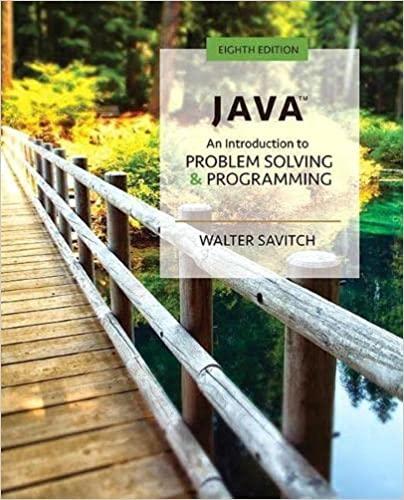Question
Your program should use the Free Pascal compiler described in CSC 540. When you hand in your assignment to the digital dropbox, it should be
Your program should use the Free Pascal compiler described in CSC 540. When you hand in your assignment to the digital dropbox, it should be a .PAS file, not zipped.
Be careful to use qword instead of int variables for the appropriate declarations since some of these numbers may be over 32,767 (the limit of a Pascal int).
Also, while you are debugging your program, it is wise to print out to the screen frequently so you can see what’s going on (and perhaps what’s going wrong!). But once you start running programs that do LOTS of calculations, then do input and output sparingly; input and output require FAR more time than other calculations, and you want simulations doing millions of trials to go quickly, not slowly.
Your simulation has to do with a bottle of vitamin pills. The bottle of pills starts out with N pills. (More on N in a moment.) You need to take one half of a pill each day. Each day, you pull out a pill from the bottle. Assume that any pill is the bottle is equally likely to be selected. If you pull out a whole pill, then you break that pill in half, swallow one of the halves, and put the other half back in the bottle. If you pull out a half pill, then you swallow that half pill.
We are interested in tracking the ratio of half pills to all the pills left in the jar. When you start with a new jar of N whole pills, there are no half pills at all, so the ratio is 0/N. When you get down to the last half pill in the jar (and no whole pills), then the ratio is 1/1. In between, what does that ratio look like? You are going to use random simulation to find out.
Start with a full jar of all whole pills. (Perhaps you should use an array for this; each entry in the array would be able to record if a pill was a half or a whole pill.) Randomly pick one of the pills left in the jar. If that pill is a whole pill, change it to a half pill. If that pill is a half pill, then remove that pill from the jar. (Somehow that array entry should “disappear,” and the array should become shorter; there are different ways to do this.)
After each pill is chosen, determine the ratio of half pills to all pills. For a jar holding N whole pills, your simulation will randomly choose a pill 2*N times before the jar is empty.
Assume at first that your jar holds 50 pills. Fill up the jar with 50 whole pills, and empty that jar, keeping track of the ratio each time a pill is chosen. You should finish with an empty jar after 100 simulated days. Now do the same experiment 3 more times, yielding 400 data points.
Now take the average of the 4 data points on day 1, day 2, and so one for all 100 days. Now you will have 500 data points in 5 series.
Finally, do exactly the same thing, but this time use 100 pills. Again, do 4 repetitions, and then average.
Step by Step Solution
3.50 Rating (157 Votes )
There are 3 Steps involved in it
Step: 1
code program Vitamin P ill Sim ulation uses S ys Ut ils type TV ...
Get Instant Access to Expert-Tailored Solutions
See step-by-step solutions with expert insights and AI powered tools for academic success
Step: 2

Step: 3

Ace Your Homework with AI
Get the answers you need in no time with our AI-driven, step-by-step assistance
Get Started


